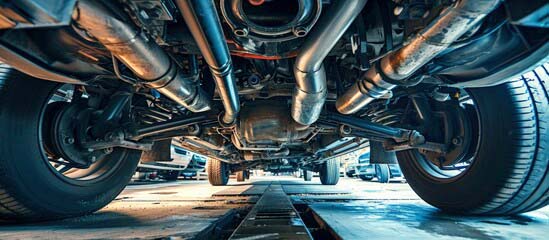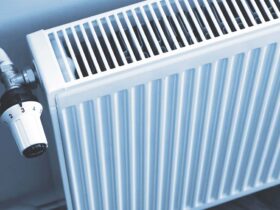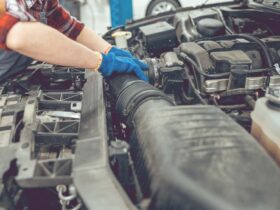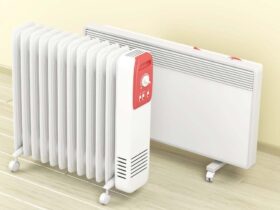Ball joint wear often leads to uneven tire wear and decreased vehicle stability. This issue can cause significant safety concerns if left unaddressed.
Early recognition and rectification of ball joint problems are crucial in maintaining your vehicle’s tire health and overall performance. Ball joints serve as pivot points between the wheels and the suspension of your car, allowing for smooth and controlled wheel movement.
Over time, these joints can deteriorate from use and environmental stresses, leading to excessive tire wear patterns and potentially dangerous driving conditions. Regular inspections and maintenance are essential to prevent this issue and the subsequent costs related to tire replacement and additional repairs. By keeping an eye on the state of your vehicle’s ball joints, you can ensure a safer and more cost-effective driving experience.
Introduction To Ball Joint Tire Wear
Tires tell a story about your car’s health. Just like your shoes show wear patterns, tires reflect your car’s joints. The ball joint is a pivot point for the wheel and tire. It lets the wheel turn left and right. It also lets it move up and down with the road surface. Ball joint wear can cause tire trouble. It is vital to understand and spot early.
The Role Of Ball Joints In Vehicle Suspension
Ball joints form a crucial link in your car’s suspension system. They connect the wheel hubs to the rest of the suspension. This connection must be smooth and precise. Regular checks can save your tires from uneven wear. Properly working ball joints give you a smooth ride and keep your tire tread flat on the road.
Consequences Of Worn Ball Joints On Tires
When ball joints wear, tires suffer. They may show uneven wear patterns, such as feathering or scalloping. A shaky steering wheel or clunking sounds can signal trouble. Ignoring these signs leads to bigger issues. Your tire’s lifespan can shorten. Your safety can also be at risk. Regular inspections are key to catching wear early.
Identifying ball joint wear early can save on tire replacement costs. It ensures your vehicle drives smoothly and remains safe. Be proactive and check your car’s ball joints regularly!

Identifying Ball Joint Wear
Your car’s ball joints are pivotal for smooth steering and stable tire wear. Recognizing the signs of ball joint wear is crucial for safe driving. Let’s uncover common symptoms and inspection methods.
Common Symptoms Of Ball Joint Failure
- Uneven Tire Wear: Look for abnormal tire wear patterns.
- Noises: Listen for creaking or knocking during turns.
- Loose Steering: Feel for steering wheel play or wandering.
- Vibrations: Detect vibrations from the front of the vehicle.
Visual Inspection Methods
Spotting ball joint wear visually involves a few steps.
- Hoist the vehicle.
- Grasp the tire at the top and bottom.
- Rock it. Notice any excessive play.
Also, inspect the boot. A damaged boot can indicate a compromised joint.
A mechanic’s eye will notice more subtle signs, so consider a professional inspection for accurate diagnosis.
Underlying Causes Of Ball Joint Deterioration
Ball joints act as pivot points between the wheels and suspension of your vehicle. They allow for smooth steering and movement of the wheels. But these critical components can wear down over time, leading to unsafe driving conditions and tire wear. Understanding the reasons behind ball joint deterioration is key to preventative maintenance and vehicle safety. Below, we dive into the main factors that contribute to ball joint wear.
Impact Of Driving Conditions
Various driving conditions directly affect ball joint lifespan. Rough terrain such as unpaved roads, potholes, and speed bumps can cause excessive strain. Consistently driving under these conditions can lead to an accelerated wear rate. Regular inspections can help spot early signs of damage.
- Off-road driving
- Rough city roads
- Constant heavy loads
Material Fatigue And Age
Just like any other part of a vehicle, ball joints can suffer from material fatigue. Over time, the stress of daily use can weaken the joints. Older vehicles may face this naturally as the joints age, even if the car hasn’t been driven hard.
| Age of Vehicle | Potential Ball Joint Status |
| 5-10 years | Initial wear signs |
| 10+ years | Increased risk of fatigue |

Effects Of Ball Joint Damage
Do you ever wonder why your tires wear out unevenly? Ball joints could be the culprit. Ball joint damage leads to a cascade of problems in your car. It affects the tires, steering, and handling. Let’s explore these effects more closely.
Abnormal Tire Wear Patterns
Ball joint damage leads to uneven pressure on tires. This uneven pressure creates abnormal wear patterns. You might notice:
- Feathering: Tires develop a series of ridges on the edge.
- Camber wear: Excessive wear on the inside or outside edge.
Regular tire inspections help spot these patterns early.
Handling And Steering Issues
With faulty ball joints, steering feels loose or wanders. Sharp turns become a challenge. You may feel vibrations from the front wheels. Here’s what to watch for:
- Loose steering wheel: The wheel turns more than usual for a turn.
- Noise: A clunking sound may come from the front suspension.
If these issues sound familiar, check your ball joints soon.
Assessing Tire Damage
Ball joint tire wear is a sneaky culprit behind tire damage. It can cause uneven wear and shorten tire life. Detecting the signs early saves both money and ensures a smooth ride. Let’s dive into how to spot tire wear and understand the safety concerns it raises.
Interpreting Tire Wear Indicators
Tires have built-in tread wear indicators that are crucial for assessing their health. These markers are like a secret code on your tire’s surface, hinting at deeper issues.
- Bald Spots: May indicate alignment problems.
- Feathering: Points to issues with suspension or alignment.
- Cupping: Suggests worn out dampers or imbalanced wheels.
Dissect these signs to catch ball joint trouble before it gets worse.
Safety Implications Of Uneven Tire Wear
Uneven tire wear is not just an inconvenience; it’s a red flag for safety. It means your car may not handle or stop as it should. Especially in wet or icy conditions, worn tires significantly increase the risk of accidents.
| Tire Condition | Potential Risks |
| Excessive Wear on One Side | Poor wheel alignment leading to loss of control. |
| Wear in the Center | Over inflation causing less grip on the road. |
| Wear on the Edges | Under inflation making the car sluggish to respond. |
It’s paramount to ensure your tires are in top condition for a safe drive.

Quick Fixes For Ball Joint Issues
Ball joints are critical to your car’s suspension system. Wear or damage can lead to tire problems and unsafe driving. Not all issues require a full replacement right away. Let’s talk about some temporary solutions to keep you rolling safely until you can get professional help.
Temporary Solutions To Address Loose Ball Joints
Regular inspections can catch ball joint wear early. If you notice looseness in the ball joint, consider these temporary fixes:
- Lubrication: Regular greasing can help reduce friction.
- Tightening: Some ball joints allow for tightening to reduce play.
- Checking wheel alignment: Misalignment can increase ball joint stress.
Remember, these are short-term solutions only. They buy you time to plan for a lasting repair.
When To Seek Professional Help
Don’t wait if you notice these signs:
- Unusual tire wear patterns.
- Noisy suspension, especially when turning or hitting bumps.
- Steering issues, like wandering or vibrations.
Professional mechanics will assess the situation properly. They provide solutions that ensure safety and longevity for your vehicle’s suspension system.
Preventive Maintenance Tips
Tire wear can indicate ball joint issues. Preventing this saves time and money. Here are key tips to avoid ball joint-related tire wear:
Regular Inspection And Lubrication
Regular checks keep ball joints working well. Every oil change is a chance to check. Look for looseness or any signs of wear. Lubrication reduces friction that can cause damage. Use a grease gun for lubrication. It keeps ball joints moving smoothly.
- Inspect ball joints every oil change.
- Look for signs of wear like looseness.
- Use a grease gun to lubricate regularly.
Choosing Quality Replacement Parts
Quality parts mean safer driving. Cheap parts often wear out faster. They cost more over time. Choose OEM or certified aftermarket options. They offer better performance and longer life. Check for warranties too. A warranty shows confidence in part durability.
- Select OEM or certified aftermarket parts.
- Avoid cheap options that wear out quickly.
- Look for parts with warranties.

Conclusion: Ensuring Longevity Of Ball Joints And Tires
The life of your ball joints and tires depends on care. Proper checks prevent wear and costly repairs. This part provides crucial tips to keep your car running smooth.
The Importance of Regular Maintenance
The Importance Of Regular Maintenance
Maintenance is key for vehicle health. A check-up routine for ball joints and tires can spot issues early. Simple steps can help:
- Check tire pressure monthly. Right pressure means even wear.
- Inspect tires for damage or irregularities often.
- Rotate tires every 6,000 miles. This ensures even tire wear.
- Get alignment checked yearly. Alignment directly affects ball joints.
- Lubricate ball joints as recommended. It keeps them moving with ease.
Recognizing the Need for Professional Service
Recognizing The Need For Professional Service
Experts catch what you might miss. A pro can spot subtle signs of wear. When should you see them? Look at these signs:
| Signs | Action |
| Uneven tire treads | Get an alignment check |
| Noises when turning | Inspect ball joints |
| Loose-feeling steering | Seek suspension check |
| Pulling to one side | Have tires and suspension serviced |

Regular visits to an auto shop can save you money. They help you avoid big repairs. Invest in your car’s upkeep and enjoy a smooth ride!
Frequently Asked Questions Of Ball Joint Tire Wear
Can Worn Ball Joints Cause Tire Damage?
Yes, worn ball joints can lead to uneven tire wear and damage since they are integral in maintaining proper wheel alignment.
How To Detect Ball Joint Wear?
Detecting ball joint wear often involves checking for uneven tire wear, loose steering, or clunking noises from the suspension area.
What Is The Lifespan Of Ball Joints?
The lifespan of ball joints varies, typically lasting from 70,000 to 150,000 miles, depending on driving habits and road conditions.
Conclusion
Recognizing the signs of ball joint tire wear is crucial for vehicle safety and maintenance. By staying alert to uneven tire wear patterns and driving disturbances, you can address ball joint issues before they escalate. Regular inspections and prompt repairs will not only extend tire life but also ensure a smoother, safer ride.
Drive responsibly; prioritize vehicle upkeep.





